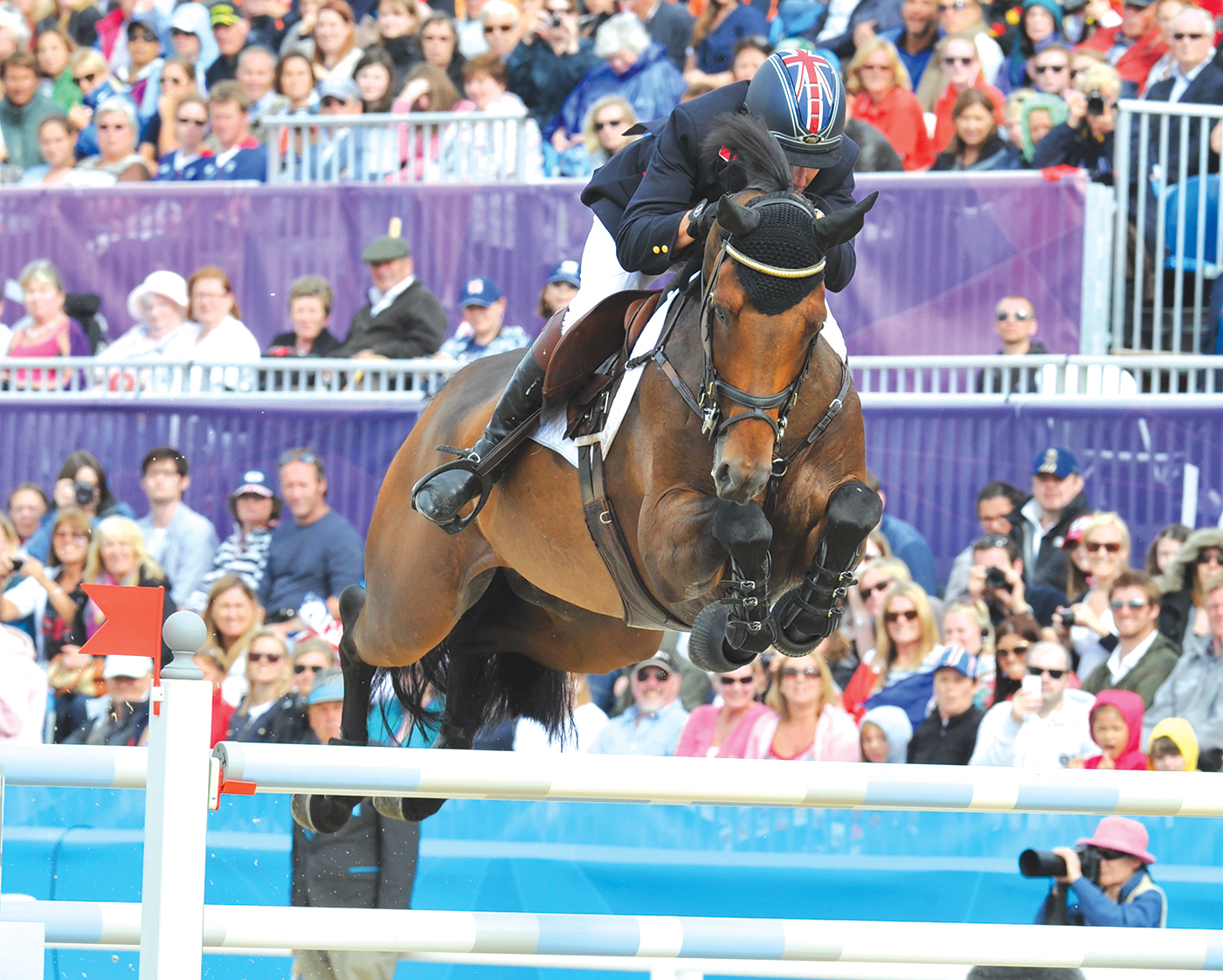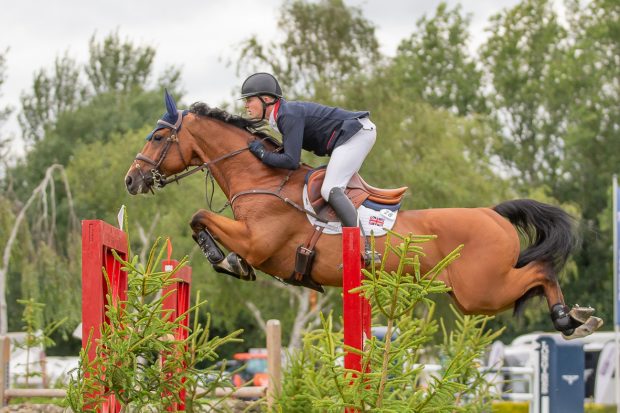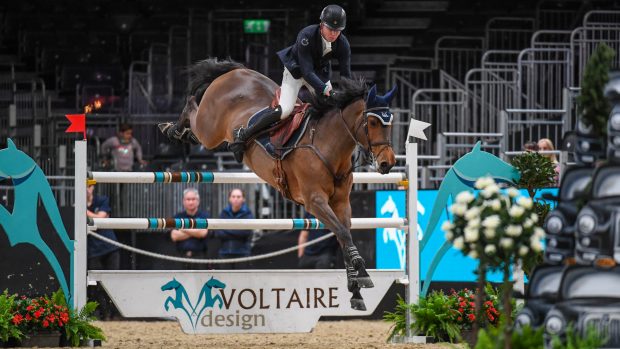Peter Charles is a household name in showjumping, having forged out a stellar career in the saddle before providing his talented children Harry, Scarlett and Sienna with the springboard to launch their own careers. But did you know he has also built a successful showjumping breeding enterprise, producing some very exciting prospects from his Hampshire pastures? Here, he offers some insight into his methods of choosing a broodmare and breeding top prospects.
“One of my very good friends, Kevin Cooper, who lives down the road from me, got me into the breeding side of the sport,” explains Peter. “He would always talk about it and he had a nice Irish mare, who was a very good 1.40m jumper. We were at a show together and he asked me what I thought of the stallion Carnaval Drum, who he had just bought, and I said: ‘That’s a good one, let’s use him’.
“I rode the progeny, he was called Carnavelly, and I won the six-year-old World Championships, the German Masters, the Berlin grand prix and the World Cup at the London International Horse Show on him. To have had a hand in that horse was fantastic, and that really inspired me to breed myself. Kevin has also bred many good horses since.”
“We have no mares over the age of 16”
Peter has nine broodmares, producing between six and nine foals per year, but, he says, age is crucial when it comes to the mares.
“I believe the younger mares produce the best horses,” he says. “If you also look at horse racing, the successful ones tend to be by young mares. So, I have taken that on board. I try to mainly breed from good pedigrees over a few generations with the mares themselves. They must also have a good jump and conformation. We have no mares over the age of 16 and we start to take embryos from them around 8-10 years old.
“I love seeing the foals being born and bringing them up. Earlier on in my breeding career I sold one horse too early, and I have learnt from this. I sold Clear Rounds Than Party aged two, for £1,500, because I judged the horse too early on his loose jumping. He ended up second in the grand prix at the London International Horse Show. It taught me to never be impatient and if you judge a young horse every time they jump and perform you will be disappointed. They need time to develop, and all are vastly different in their development.
“Clear Rounds Than Party was the first horse that was born here. I must stress I never gave him that name, that was Geir Gulliksen!”
Despite proving successful, Peter is the first to admit it’s not a commercial enterprise.
“I like to keep the foals and not sell too early,” he says. “I’ll buy one or two as well. I like to wait until they are in the spring of their fourth year, before we break them in, this allows the horse to be strong enough to show me what they are like and I will not misread a situation with the horse not being ready or strong enough.
“We never loose jump our horses; they will have a few small jumps with a rider when they are first broken in and this gives us an accurate representation of their talent. Loose jumping can give out a lot of false impressions, and I cannot judge a horse loose jumping at a sale because it can be totally inaccurate.”
Peter Charles: the key to success
So what is the secret to producing a successful showjumper?
“I can’t say for sure, because sometimes you get horses that don’t have any top pedigree lines at the very top of the sport,” he says. “But I do 100% believe that if you have a really good dam, with top breeding going back two or three generations, you are improving your chances of breeding a top horse.
“All a stallion can do is better the mare, so in percentages of probability, you need a very good mare to start with. If you have that, then you are increasing the chances of your success rate – it is not guaranteed, but you are giving yourself a fair chance. However, with some mares it doesn’t matter who you put them to, they still produce outstanding horses.
“The perfect example [of an unexpectedly successful pairing] is Liscalgot who was ridden by Dermott Lennon. They together won the individual World Championship in Jerez de la Frontera in 2002. Liscalgot’s dam was bought by a breeder to act as a way of keeping his grass down in his paddock. One day he decided to put her into foal, but she would not load into the lorry, so they chased her down a road in Ireland to the nearest stallion who happened to be Touchdown. This combination bred the world champion in 2002!”
“Many people pay so much money that they expect instant results”
Talking about forming partnerships with your horse, Peter stresses: “Sometimes partnerships do not work out, but I think with enough time and a smart rider, who does not try to force issues, a partnership can develop. Many people now, do not give the horse time or a chance, they pay so much money that they expect instant results. It has never worked like that – a horse does not know how much it costs.”
Peter, who won team gold at the London 2012 Olympics, says his partner that day, Vindicat (pictured below) was a “true family horse”.
“My wife was the half-owner and my son, Harry, persuaded me to buy the horse as a four-year-old,” he says. “I had just broken my back in three places, so I wasn’t even sure I was going to ride again, so to jump the last round on Vinidicat in order to the win the gold medal for Great Britain at home was something only dreams are made of.”

“The four most iconic arenas in the world”
Talking about the showjumping calendar, Peter says: “I think that Rolex has taken show jumping to next level, it is now on par with all the other sporting Majors, such as tennis and golf. Rolex has picked the four most iconic arenas in the world [for the Rolex Grand Slam] – they are without a doubt historic venues and the history in them needs no explaining. The level of competition associated with those arenas, over the years, is the best in the world.
“CHIO Aachen is beautiful, manicured, and the attention to details unrivalled. It takes your breath away every time. They have taken CHI Geneva to another level, way beyond any other indoor show in the world. The CSIO Spruce Meadows ‘Masters’ is a long plane ride away, but it is worth every second when you get there. The crowds are phenomenal, and they have created the best show jumping arena in North America. The Dutch Masters is magnificent and steeped in history. Each of those venues are also outstanding for the horses, great stabling, warm up arenas and plenty of room to move them around.
“CHI Geneva is the next Major [8-12 December] and it brings the whole equestrian world together, with the Rolex IJRC Top 10 Final, the Rolex Grand Prix and the fantastic prize money. It is without doubt the pinnacle of the whole indoor season and is proper grand prix showjumping with no pay cards and no gimmicks.”
Inspired by legendary riders
Peter has been inspired by the likes of such legends as Hugo Simon and Paul Schockemöhle over his glittering career.
“I loved watching the pure belief of Hugo Simon,” he reveals. “I would watch him, his warm-ups, his approach at the beginning of a show. He was the only man to jump every class in the show, and he would try and win them all even on his best horses. His horses had to win and the belief that he gave his horses to win was something you rarely see. I have never seen that level of intensity; a few riders want to win the top few classes at a show, but they usually mainly focus on the grand prix. But Hugo wanted to win from the first day, to the final grand prix. His mental preparation was amazing, and he prepared his horses to win. They knew what to expect from him as a rider, they were ready, and his belief in himself and his horses was extraordinary.
“In 1984 when I won my first World Cup in Brussels on a seven-year-old, called April Sun, after my round Paul Schockemöhle offered to buy the horse. I was quite naïve at that age and I told him that the horse wasn’t for sale. He said are you sure? I told him my plan was to go to the Seoul Olympics. Paul said good luck and look after him because they don’t come around that often. The following year the owner sold him! So ever since then with owners or partnerships, I make sure there is a clear plan. It is better for everyone involved.”
With thanks to Rolex Grand Slam.
You might also be interested in:
H&H visited the Hampshire stables of up-and-coming star Harry Charles and we encountered classy horses, a great team and stunning

Take an exclusive peek round Harry Charles’ yard

Great Britain still in the hunt after Harry Charles jumps in Tokyo Olympic team showjumping qualifier

Harry Charles savours ‘bucket list’ moment as Great Britain wins Nations Cup Final consolation round

Subscribe to Horse & Hound this spring for great savings
Horse & Hound magazine, out every Thursday, is packed with all the latest news and reports, as well as interviews, specials, nostalgia, vet and training advice. Find how you can enjoy the magazine delivered to your door every week, plus options to upgrade your subscription to access our online service that brings you breaking news and reports as well as other benefits.




